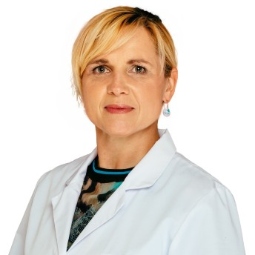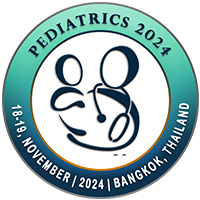
Mateja Starbek Zorko
University Medical Centre Ljubljana, SloveniaTitle: Childhood Psoriasis
Abstract
Psoriasis (Ps) is an inflammatory, chronic, immune-mediated disease, characterized by red and scaly patches and plaques of the skin. The onset of the disease can occur at any age, also in childhood. Prevalence of Ps in children varies worldwide, its estimated range is from 0 to 1.37 % of children, commonly seen in older children and adolescent.
Psoriasis is a multifactorial disease, with both genetic and environmental factors contributing its risk. In approximately 30 % of children a positive family history of Ps can be recognised as a risk factor. A common genetic risk factor for early-onset Ps is HLA Cw6 (PSOR1). Less common is a mutation in CARD14 (PSOR2) gene, which is transmitted in an autosomal dominant fashion and may manifest as erythrodermic, pustular, or plaque psoriasis. There are multiple other factors that may trigger or exacerbate psoriasis, like skin trauma (Koebner phenomenon), infections (e.g. streptococcal), certain medications, and stress.
As in adults, psoriasis can present similarly in children, with chronic plaque psoriasis as the most common form of the disease, and guttate, pustular, and erythrodermic psoriasis as additional manifestations. However, there are characteristic features of psoriasis in paediatric population, such as involvement of the diaper area in infants, scalp involvement as a common presentation of chronic plaque psoriasis, which more often presents with facial involvement and smaller and thinner plaques than in adults. As with adult patients, children and adolescents with psoriasis have an increased risk of various comorbidities, such as obesity and metabolic syndrome, arthritis, psychiatric disorders, non-alcoholic fatty liver disease, chronic bowel disease, and other diseases.
Psoriasis can negatively impact the quality of life of children and their families. In most children it can be successfully treated with topical medications, however, children with moderate to severe psoriasis often require phototherapy or systemic therapy, including biologics. Many of the therapies for psoriasis are similar in children and adults, but efficacy and safety trials in children are limited. Consideration of patient-specific factors, such as age, disease severity, comorbidities, risk tolerance, and adverse effects of specific medications, guides our clinical approach to treatment. There are already some national clinical guidelines for children with psoriasis, that can help us decide on the treatment of the disease. We are presenting our data on children with psoriasis and the therapeutic options we have chosen based on the type and severity of the disease.
Biography
Mateja Starbek Zorko graduated medicine in 2000 at the Medical faculty, University of Ljubljana. In 2006 she obtained a master's degree in Biomedicine, in 2010 specialization in Dermatovenereology and in 2018 PhD in the field of Biomedicine. She is Head of Children's department in Dermatovenereology Clinic of University Medical Centre Ljubljana and takes part in teaching process as assistant at Medical faculty, University of Ljubljana. She is one of the leading dermatologists in the field of paediatric dermatology and psoriasis in Slovenia and one of the lecturers of the School of Pediatric Dermatology, Atopic Dermatitis and in the School of patients with psoriasis treated with biologic drugs. She is a member of the European Academy of Dermatology and Venereology (EADV), European Society for Paediatric Dermatology (ESPD) and the Association of Slovenian Dermatovenereologists (ZSD).

